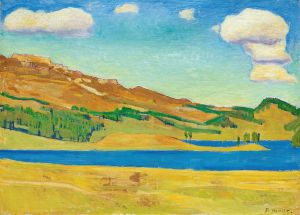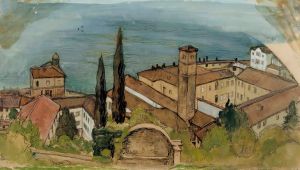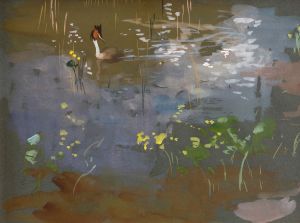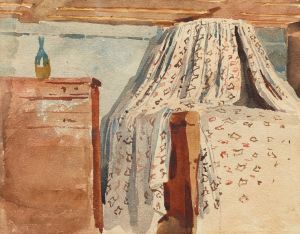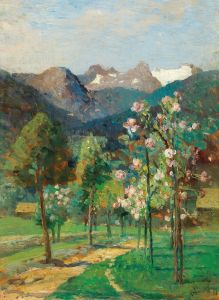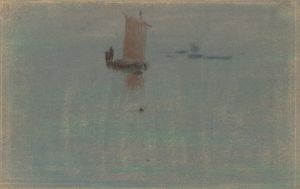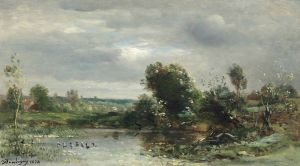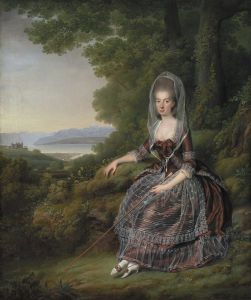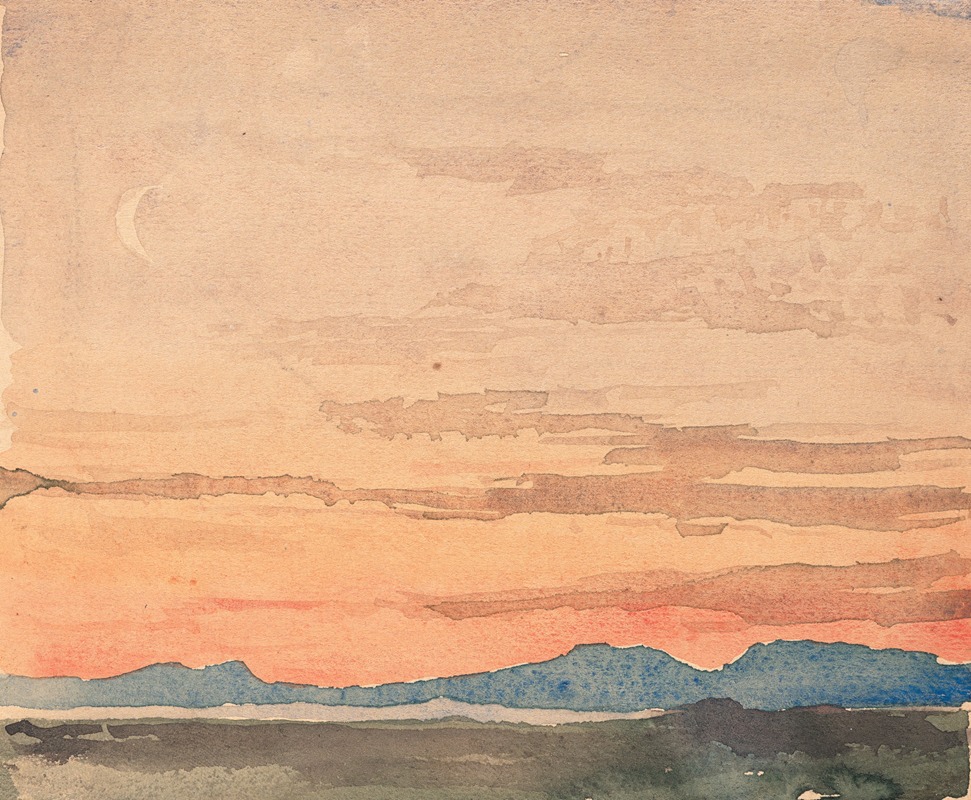
Blick auf das Nordostende des Neuenburger Sees von Ins aus bei Abenddämmerung
A hand-painted replica of Albert Anker’s masterpiece Blick auf das Nordostende des Neuenburger Sees von Ins aus bei Abenddämmerung, meticulously crafted by professional artists to capture the true essence of the original. Each piece is created with museum-quality canvas and rare mineral pigments, carefully painted by experienced artists with delicate brushstrokes and rich, layered colors to perfectly recreate the texture of the original artwork. Unlike machine-printed reproductions, this hand-painted version brings the painting to life, infused with the artist’s emotions and skill in every stroke. Whether for personal collection or home decoration, it instantly elevates the artistic atmosphere of any space.
Albert Anker's painting Blick auf das Nordostende des Neuenburger Sees von Ins aus bei Abenddämmerung (translated as View of the Northeastern End of Lake Neuchâtel from Ins at Dusk) is a work by the renowned Swiss artist Albert Anker (1831–1910). Known as the "national painter" of Switzerland, Anker is celebrated for his detailed and realistic depictions of rural life, landscapes, and portraits that reflect the cultural and social environment of 19th-century Switzerland.
This particular painting captures a serene view of Lake Neuchâtel, the largest lake entirely within Switzerland, as seen from the village of Ins during the evening twilight. Ins, located in the Seeland region of the canton of Bern, was Anker's hometown and a frequent subject of his works. The painting reflects Anker's deep connection to the Swiss countryside and his ability to convey the tranquil beauty of natural landscapes.
The composition of the painting emphasizes the calm waters of the lake, the soft hues of the evening sky, and the gentle transition of light as day turns to night. Anker's meticulous attention to detail and his skillful use of color create a harmonious and peaceful atmosphere, characteristic of his landscape works. The painting exemplifies his ability to balance realism with a sense of poetic tranquility.
While Anker is primarily known for his genre paintings depicting everyday life, his landscapes, such as this one, demonstrate his versatility as an artist and his appreciation for the natural beauty of Switzerland. The painting serves as a visual testament to Anker's artistic philosophy, which sought to find beauty in the ordinary and to celebrate the simplicity of rural life.
The exact date of creation for this painting is not widely documented, but it is consistent with Anker's broader body of work, which spans the mid to late 19th century. The painting is an example of his ability to combine technical precision with an emotional resonance that captures the viewer's imagination.
As with many of Anker's works, this painting reflects the cultural and geographical identity of Switzerland during his lifetime. It remains a valuable piece of Swiss artistic heritage, appreciated for its aesthetic qualities and its connection to the artist's personal and national roots.





